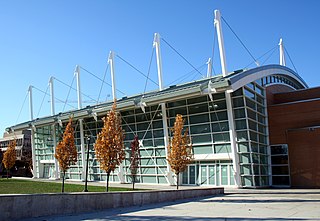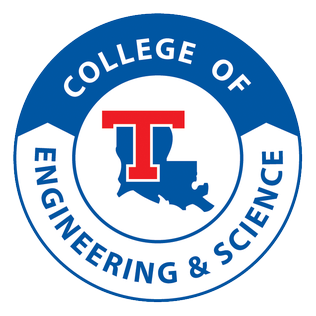
Mechanical engineering is an engineering branch that combines engineering physics and mathematics principles with materials science, to design, analyze, manufacture, and maintain mechanical systems. It is one of the oldest and broadest of the engineering branches.
A civil engineer is a person who practices civil engineering – the application of planning, designing, constructing, maintaining, and operating infrastructure while protecting the public and environmental health, as well as improving existing infrastructure that may have been neglected.

An engineering technologist is a professional trained in certain aspects of development and implementation of a respective area of technology. Engineering technology education is even more applied and less theoretical than engineering education, though in a broad sense both have a focus on practical application. Engineering technologists often assist engineers but after years of experience, they can also become engineers. Like engineers, areas where engineering technologists can work include product design, fabrication and testing. Also as with engineers, engineering technologists sometimes rise to senior management positions in industry or become entrepreneurs.
The ABET, incorporated as the Accreditation Board for Engineering and Technology, Inc., is a non-governmental organization that accredits post-secondary education programs in applied and natural science, computing, engineering and engineering technology.

The American Society of Civil Engineers (ASCE) is a tax-exempt professional body founded in 1852 to represent members of the civil engineering profession worldwide. Headquartered in Reston, Virginia, it is the oldest national engineering society in the United States. Its constitution was based on the older Boston Society of Civil Engineers from 1848.
Capitol Technology University is a private university in South Laurel, Maryland near Washington, DC. The university was founded in 1927 as the Capitol Radio Engineering Institute by a former US Navy Radioman. CREI changed its name to Capitol Institute of Technology in 1964, changed its name again to Capitol College in 1987, and assumed its present name in 2014. Capitol offers undergraduate and graduate programs specializing in engineering, computer science, information technology, and business. It is classified among "Special Focus Institutions—Schools of Engineering" and is a National Center of Academic Excellence in Information Assurance Education.
Fire protection engineering is the application of science and engineering principles to protect people, property, and their environments from the harmful and destructive effects of fire and smoke. It encompasses engineering which focuses on fire detection, suppression and mitigation and fire safety engineering which focuses on human behavior and maintaining a tenable environment for evacuation from a fire. In the United States 'fire protection engineering' is often used to include 'fire safety engineering'.

The Cal Poly San Luis Obispo College of Engineering is the engineering college of the California Polytechnic State University in San Luis Obispo, California. It has nearly 250 faculty members and more than 6,000 students enrolled in fourteen bachelor's and in eleven master's degree programs through nine engineering departments. Its facilities house more than 80 classrooms, laboratories and work spaces occupying more than 160,000 square feet. In the 2021 U.S. News & World Report's "America's Best Colleges" edition, the College of Engineering is ranked 8th out of 220 public and private undergraduate engineering schools in the U.S. where doctorates are not offered.

The Cal Poly Pomona College of Engineering is the engineering college at California State Polytechnic University, Pomona located in Pomona, California, United States. Known for its "learn by doing" philosophy, the college's motto is: "Learn by Doing: Making Imagination Real". Cal Poly has one of the "most recognized engineering programs in the country" and, with nearly 6,000 students, it is also the largest engineering college in Southern California, the second largest college of engineering in the California State University system, and the seventeenth largest engineering college in the United States. In the 2020 U.S. News & World Report's "America's Best Colleges" edition, the College of Engineering is ranked 11th out of 210 public and private undergraduate engineering schools in the U.S. where doctorates are not offered.
The American Engineers' Council for Professional Development or simply the Engineers' Council for Professional Development (ECPD), established in June 1932, was an engineering professional body dedicated to the education, accreditation, regulation and professional development of the engineering professionals and students in the United States. ECPD grew and has changed its name to ABET, Inc. and its focus solely to accreditation.

A building engineer is recognised as being expert in the use of technology for the design, construction, assessment and maintenance of the built environment. Commercial Building Engineers are concerned with the planning, design, construction, operation, renovation, and maintenance of buildings, as well as with their impacts on the surrounding environment.
Building services engineering is a professional engineering discipline that strives to achieve a safe and comfortable indoor environment whilst minimizing the environmental impact of a building.
The Architectural Engineering Institute (AEI) is the professional organization for architectural engineers. It is managed as a semi-autonomous division of the American Society of Civil Engineers (ASCE), like the Structural Engineering Institute. ASCE and ASHRAE are the delegated societies for the architectural engineering's ABET accreditation process. However, AEI has successfully developed, with NCEES, the architectural engineering professional engineering registration examination which was first offered in 2003. AEI's postal address is 1801 Alexander Bell Drive, Reston, VA, 20191-4400 USA.

Architectural Engineer (PE) is a professional engineering designation in the United States. The architectural engineer applies the knowledge and skills of broader engineering disciplines to the design, construction, operation, maintenance, and renovation of buildings and their component systems while paying careful attention to their effects on the surrounding environment.
The Civil Engineering Body of Knowledge is a body of knowledge, set forth in a proposal by the American Society of Civil Engineers (ASCE) entitled Civil Engineering Body of Knowledge for the 21st century. This proposal seeks to identify and implement improvements to the education and licensure process for civil engineers in the United States of America. The proposal is intended to increase occupational closure by increasing the requirements to become a licensed engineer. Some have identified this joint effort with the Raising the Bar as not necessary.

Architectural engineering, also known as building engineering or architecture engineering, is an engineering discipline that deals with the technological aspects and multi-disciplinary approach to planning, design, construction and operation of buildings, such as analysis and integrated design of environmental systems, structural systems, behavior and properties of building components and materials, and construction management.
Dan Mircea Frangopol is an American civil engineer and the inaugural holder of the Fazlur R. Khan Endowed Chair of Structural Engineering and Architecture at Lehigh University, Bethlehem, Pennsylvania.

The College of Engineering and Science (COES) is one of five colleges at Louisiana Tech University. The roots of the College date back to the founding of Louisiana Tech in 1894 when the Department of Mechanics was created. Today, the college includes twenty-five programs, fourteen undergraduate, seven master's, and four doctoral programs. College programs are located on the Louisiana Tech campus in Ruston, Louisiana. In addition, courses are offered at the CenturyLink Headquarters in Monroe, Louisiana, at Barksdale Air Force Base, in Bossier City, Louisiana, and at the Louisiana Tech Shreveport Center, in Shreveport Louisiana.

The Fred DeMatteis School of Engineering and Applied Science (SEAS) at Hofstra University, a private university located in Hempstead, New York, United States, was created in 2012 out of the previously existing Departments of Engineering and Computer Science. It offers eight ABET-accredited degrees, along with a B.S. Computer Science & Cybersecurity, a B.S. Computer Science and Mathematics, an M.S. Computer Science, an M.S. Cybersecurity, an M.S. Data Science, and an M.S. Engineering Management.

Geological engineering is a discipline of engineering concerned with the application of geological science and engineering principles to fields, such as civil engineering, mining, environmental engineering, and forestry, among others. The work of geological engineers often directs or supports the work of other engineering disciplines such as assessing the suitability of locations for civil engineering, environmental engineering, mining operations, and oil and gas projects by conducting geological, geoenvironmental, geophysical, and geotechnical studies. They are involved with impact studies for facilities and operations that affect surface and subsurface environments. The engineering design input and other recommendations made by geological engineers on these projects will often have a large impact on construction and operations. Geological engineers plan, design, and implement geotechnical, geological, geophysical, hydrogeological, and environmental data acquisition. This ranges from manual ground-based methods to deep drilling, to geochemical sampling, to advanced geophysical techniques and satellite surveying. Geological engineers are also concerned with the analysis of past and future ground behaviour, mapping at all scales, and ground characterization programs for specific engineering requirements. These analyses lead geological engineers to make recommendations and prepare reports which could have major effects on the foundations of construction, mining, and civil engineering projects. Some examples of projects include rock excavation, building foundation consolidation, pressure grouting, hydraulic channel erosion control, slope and fill stabilization, landslide risk assessment, groundwater monitoring, and assessment and remediation of contamination. In addition, geological engineers are included on design teams that develop solutions to surface hazards, groundwater remediation, underground and surface excavation projects, and resource management. Like mining engineers, geological engineers also conduct resource exploration campaigns, mine evaluation and feasibility assessments, and contribute to the ongoing efficiency, sustainability, and safety of active mining projects











